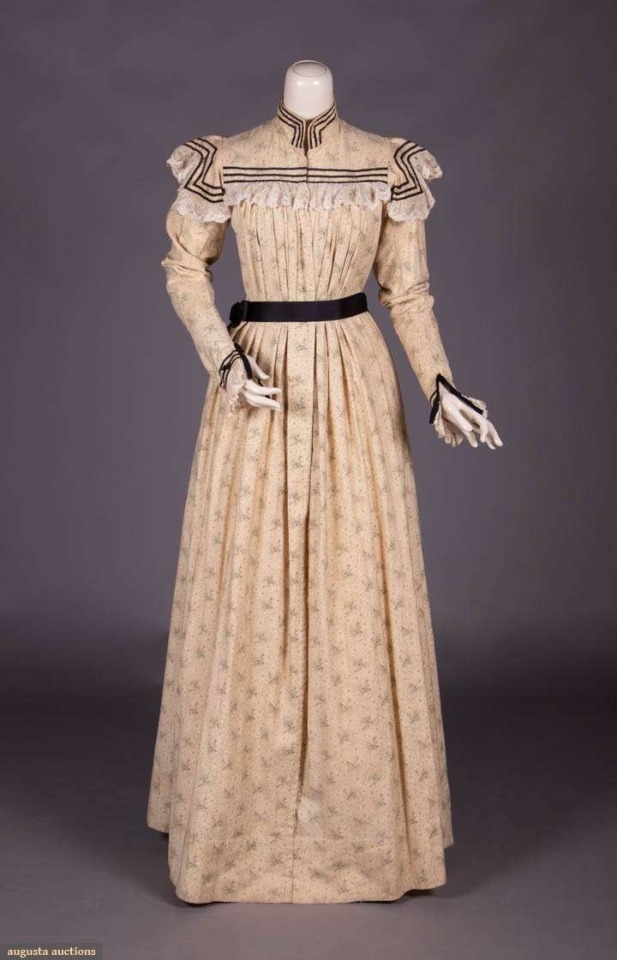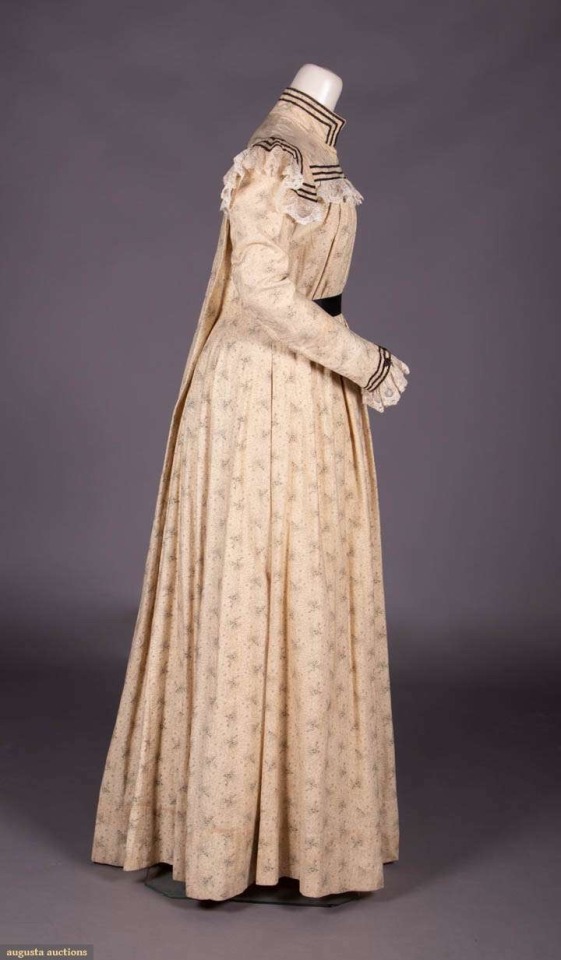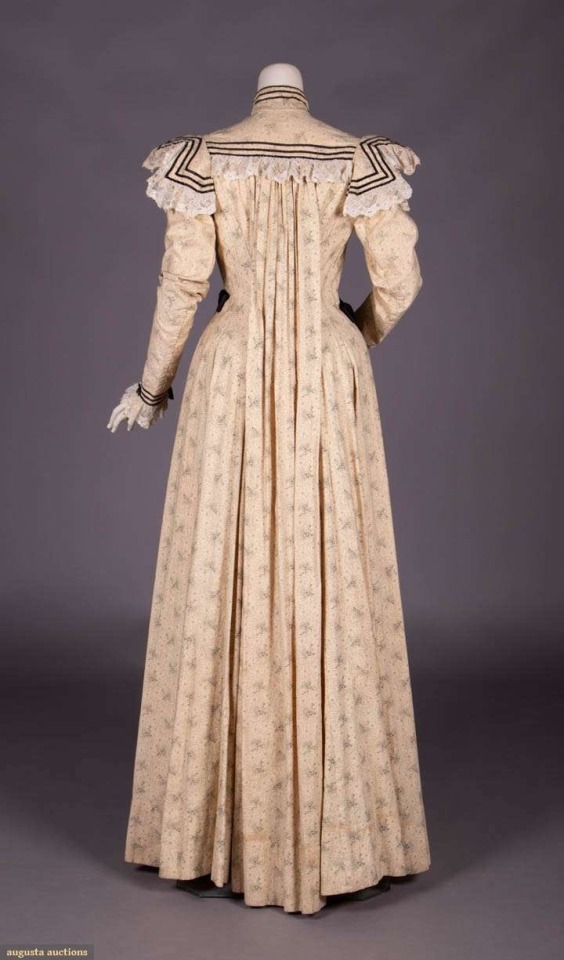#aesthetic movement
Explore tagged Tumblr posts
Text

William Kenrick, Drawing of the hall of 'The Grove', Harborne, Birmingham, c. 1877.
#william kenrick#watercolor#19th century#19th century art#interior#interior design#period design#aesthetic movement#victorian art#victorian architecture#nineteenth century interior#architecture#art#artwork#painting#victorian#design#british art#british design#english art#drawing#manor house#decor#birmingham#period decor#victoria & albert museum#english interior
93 notes
·
View notes
Photo




Bruce J. Talbert Sideboard, also known as the Pericles Dressoir, manufactured by Holland & Sons, 1866, at The Met Fifth Avenue
An ambitious example of British craftsmanship, this so-called Pericles dressoir or sideboard was specifically designed by Talbert as the centerpiece for the stand of Holland & Sons at the Paris International Exhibition of 1867. Talbert, known for his work in the reformed Gothic style, included a scene from Shakespeare’s Pericles, Prince of Tyre in the central gable as well as several quotations from this and two other Shakespeare plays, allusions to dining and the grace before a meal. Both the references to Shakespeare as well as the use of oak, a British native wood, are manifestations of immense national pride.
#Reformed Gothic#Gothic#Aesthetic Movement#Paris International Exhibition#Pericles#Bruce J. Talbert#Holland & Sons#The Met Fifth Avenue#The Met
4 notes
·
View notes
Text

~ Eleanor Fortescue-Brickdale, from Poems of Alfred Lord Tennyson (1905)
via internet archive
#eleanor fortescue brickdale#alfred lord tennyson#illustration#vintage illustration#illustration art#art history#golden age of illustration#pre raphaelite#pre raphaelism#arts and crafts movement#medieval aesthetic#victorian aesthetic#edwardian art#20th century art#early 1900s#fairytale aesthetic#fairy tale aesthetic#fairytale art#fairy tale art#cottagecore aesthetic#cottagecore#1900s#1900s art#1905#e
269 notes
·
View notes
Text

Charlotte Major Wyllie (English, 1864-1950), A Wanderer in the Elysian Fields, c. 1880s. Oil on canvas, 49¼ x 23 in. (125 x 58.4 cm)
7 notes
·
View notes
Text

Elijah in the Wilderness, Frederic Leighton (Walker Art Gallery, Liverpool)
#Elijah in the Wilderness#frederic leighton#liverpool#walker art gallery#art gallery#gallery#art exhibition#art#artblr#oil painting#biblical art#academicism#pre raphaelite#pre raphaelism#pre-raphaelite brotherhood#aestheticism#aesthetic movement#paintings#painting#Elijah#prophet elijah#angel
34 notes
·
View notes
Text













Women's Suffrage Memorabilia
#womens suffrage#png#pngs#aesthetic pngs#random pngs#feminism#suffrage movement#suffragists#feminist#badges#history#womens history#transparent
17 notes
·
View notes
Text

Sarah Paxton Bell Dodson, Honey of the Hymettus, 1891, oil/canvas (DeMell Jacobsen Foundation, Jacksonville)
21 notes
·
View notes
Text

A Christmas Carol
Artist: Dante Gabriel Rossetti (English, 1828–1882)
Date: 1867
Medium: Oil on panel
Collection: Private collection
Description
A Christmas Carol was described by Rossetti’s studio assistant and friend Henry Treffry Dunn in his unpublished papers as: ‘a maiden in resplendent eastern dress of crimson with a gold thread pattern worked throughout, playing on a stringed instrument whilst she sings “Hodie Jesu Christus natus est Hallelujah”. Rossetti was a great digger of subjects from Early English Mysteries & I conjecture that he must have unearthed this fancy from such a source.’
The connection with female beauty, music and the fashion for exotic decoration and costume were central themes of the emerging English Aesthetic movement – the revolutionary artistic style of the 1860s and 1870s that combined elements of Renaissance, Oriental and Classical styles to create an époque that was to be as important in Britain as Art Nouveau was in Europe. Central to this movement was the female musician, lost in harmonic reverie allowing herself to be observed as she creates beautiful melody but also symbolises beauty itself in its most red-lipped and full-throated incarnation.
The sensuality of music fascinated Rossetti in his Aesthetic canvases. The way in which the elegant hands of the women caress the instruments and their parted lips, have strong sexual implications which are not accidental or merely a post-Freudian interpretation. There is also the suggestion that the act of creating music invites a relationship between the spectator and the viewer and although the melody is of course inaudible, the act of its creation is an invitation for mutual appreciation.
#painting#english culture#string instrument#maiden#a christmas carol#artwork#oil painting#fine art#aesthetic movement#pre raphaelite style#dante gabriel rossetti#english painter#oil on panel#sensuality#melody#oriental style#flowers#beauty#19th century painting#european art
24 notes
·
View notes
Text

Albert Joseph Moore. "Battledore". Minneapolis Institute of Art.
21 notes
·
View notes
Text

William Kenrick, A color sketch of the hall, The Grove, Harborne, c. 1877, watercolor.
#william kenrick#watercolor#19th century#19th century art#interior#interior design#period design#aesthetic movement#victorian art#victorian architecture#nineteenth century interior#architecture#art#artwork#painting#victorian#design#british art#british design#english art#drawing#manor house#decor#birmingham#period decor#victoria & albert museum#domestic interior
30 notes
·
View notes
Text

DESIGN Since 1860
Featuring an Aesthetic Interior: The Contents of a London Apartment
(Lyon and Turnbull auction October 2024)
#this is happening right now#!#if you have a minimum of 600 dollars and want to buy something for your home#or your favorite blogger#Victorian design#arts and crafts movement#victorian era#aesthetic movement#eta: I overestimated a bit#some stuff went as low as about 425?#which is wild not in that it was low just that these particular pieces should have had more interest imo#especially compared to some that did get that attention
21 notes
·
View notes
Text

Peonies
Artist: Charles Edward Perugini (Italian-born English, 1839-1918)
Date: 1887
Medium: Oil on canvas
Collection: Walker Art Gallery, Liverpool, England
Description
Perugini’s Italian origins and continental training may account for his elegant use of line and delicate colours. This is one of many Victorian half-length, idealized female figures. They show a mood or emotion by combining face, expression, dress, pose, and background. This type of Aesthetic painting was pioneered by Frederic Leighton.
The mood here is one of tenderness, grace and quietness, considered essential female virtues at the time. The Aesthetic Movement encouraged artists to paint beautiful compositions like this rather than telling stories.
#female figure#genre art#victorian art#half length#column#basket#flowers#aesthetic movement#costume#painting#oil on canvas#fine art#oil painting#artwork#english culture#english art#charles edward perugini#english painter#european art#19th century painting#walker art gallery
6 notes
·
View notes
Text

~ Eleanor Fortescue-Brickdale, from Poems of Alfred Lord Tennyson (1905)
via internet archive
#eleanor fortescue brickdale#alfred lord tennyson#illustration#vintage illustration#illustration art#art history#golden age of illustration#20th century art#edwardian art#pre raphaelite#pre raphaelism#arts and crafts movement#british art#english art#early 20th century#early 1900s#antique books#fairy tale art#fairy tale aesthetic#fairytale aesthetic#fairytale art#1900s#1900s art#1900s style#1905#e
135 notes
·
View notes
Text



Cream Cotton House Dress, Late 1880s.
Aesthetic Movement Style.
Augusta Auctions.
#womenswear#extant garments#dress#cotton#19th century#1880s#1880s dress#augusta auctions#aesthetic movement#house dress#1880s house dress#1880s extant garment
184 notes
·
View notes
Text
Romanticism

Romanticism was a broad and influential cultural, artistic, intellectual, and literary movement that originated in Europe toward the end of the 18th century, reaching its peak during the first half of the 19th century. It emerged as a reaction against the perceived constraints of the Enlightenment's emphasis on reason, order, and rationality, as well as against the industrialization and mechanization of society brought about by the Industrial Revolution. Romanticism placed a premium on emotion, individualism, nature, imagination, the sublime, and the transcendental. While it manifested differently across national and artistic boundaries, the unifying theme of Romanticism was a deep discontent with the rationalist and materialist worldview, and a yearning for authenticity, spiritual depth, and a reconnection with the natural world and inner experience.

The roots of Romanticism can be traced to late 18th-century Germany and Britain, although its antecedents lie in earlier literary and philosophical movements, such as the Sturm und Drang ("Storm and Stress") movement in Germany and the sentimentalism of earlier British and French writers. Romanticism developed in the aftermath of the Enlightenment, a period that celebrated reason, empiricism, and scientific progress, and the French Revolution (1789), which ignited radical political ideals but also resulted in disillusionment due to its violence and aftermath.
In philosophy, Romanticism grew in reaction to Enlightenment thinkers such as Voltaire and Locke. Instead, Romantic thinkers turned to Rousseau’s ideas about the "noble savage," the corruption of civilization, and the essential goodness of human beings in their natural state. The movement also drew on pre-Enlightenment traditions, including medievalism, folk culture, and the sublime aesthetics of Edmund Burke.
Romanticism was influenced by growing nationalism and the rediscovery of medieval literature and mythology. At the same time, it reacted against the rising influence of mechanistic science and rational bureaucracy that began to reshape European societies. The Industrial Revolution, which transformed economies and landscapes, also provoked Romantic critiques of environmental destruction and the dehumanizing effects of urban life.

Key Themes and Concepts:
1. Emotion and Subjectivity
Romanticism emphasized emotion, passion, and personal feeling over the rational and objective. Romantic artists and writers valued intense emotional experiences—grief, ecstasy, awe, terror—as pathways to truth. This emphasis led to an exploration of the darker sides of human nature, including melancholy, madness, and obsession. Subjectivity became central, with the individual artist’s perspective and inner life elevated as the wellspring of creativity.
2. The Sublime
The sublime, a concept popularized by Edmund Burke, became a cornerstone of Romantic aesthetics. The sublime refers to experiences of overwhelming beauty or terror, often associated with nature—towering mountains, storms, vast oceans. These experiences surpassed human understanding and evoked a sense of awe and humility. Romantic artists and writers sought to capture this transcendent quality in their works, seeing the sublime as a portal to the divine or the infinite.
3. Nature and the Pastoral Ideal
Romanticism revered nature as a living, spiritual force and an antidote to industrialization and urban decay. Nature was often depicted as pure and restorative, in contrast to the artificiality and corruption of modern life. Romantic poets like William Wordsworth and Samuel Taylor Coleridge celebrated landscapes and rural life, while also engaging with ecological concerns. In Germany, figures like Caspar David Friedrich painted contemplative scenes that emphasized human insignificance before the natural world.
4. Imagination and Creativity
Imagination was considered superior to reason in Romantic thought. It was the faculty through which individuals accessed truth, beauty, and spiritual insight. Romantic writers viewed the imagination as a creative force capable of reshaping reality, and thus many Romantic works are characterized by fantasy, myth, dream-like imagery, and a fascination with the supernatural. The poet, for Romantics, was often seen as a prophet or visionary.
5. Individualism and the Heroic Self
Romanticism elevated the individual, especially the outsider, the genius, or the tragic hero, as a figure of significance. Romantic literature often focused on characters in isolation—either self-imposed or societal—struggling against conventional norms. The Byronic hero, exemplified by Lord Byron himself, was an iconic Romantic figure: brooding, rebellious, charismatic, and doomed. This emphasis on individuality was also linked to political and artistic freedom.
6. Medievalism and the Gothic
Romanticism revived interest in the Middle Ages, with its chivalry, mystery, and religious symbolism. This fascination manifested in architecture (the Gothic Revival), literature (e.g., Sir Walter Scott’s historical novels), and the visual arts. Gothic fiction, a subset of Romantic literature, emerged with works like Mary Shelley’s Frankenstein and Bram Stoker’s Dracula, exploring horror, the uncanny, and the limits of human knowledge.
7. Nationalism and Folk Culture
Romanticism played a key role in the formation of national identities. Romantics collected and celebrated folk tales, songs, and oral traditions, which they saw as expressions of a people’s soul. The Brothers Grimm, for example, gathered Germanic folktales as part of a broader cultural revival. In countries such as Poland, Russia, and Finland, Romanticism was intertwined with movements for independence and cultural autonomy.
8. The Supernatural and the Exotic
Romanticism embraced the irrational and mysterious. Ghosts, spirits, and dream worlds populated Romantic literature and art. Writers like Edgar Allan Poe, E.T.A. Hoffmann, and Théophile Gautier explored the uncanny and the metaphysical. At the same time, Romanticism exhibited a fascination with the "exotic"—distant lands, ancient civilizations, and Oriental cultures, albeit often through a Eurocentric or idealized lens.

Romanticism transformed literature across Europe and the Americas. In Britain, the movement is often divided into two generations. The first included William Wordsworth and Samuel Taylor Coleridge, whose Lyrical Ballads (1798) marked a turning point in English poetry, emphasizing natural speech, rustic subjects, and emotional sincerity. The second generation, including Percy Bysshe Shelley, Lord Byron, and John Keats, took more radical and passionate approaches to poetic expression, often challenging social and political norms.
In Germany, Romanticism encompassed both early (or "Jena") Romanticism, with figures like Novalis, Friedrich Schlegel, and Ludwig Tieck, and later Romanticism, including E.T.A. Hoffmann and Heinrich Heine. German Romanticism was particularly philosophical, intertwining with Idealist thought and emphasizing the unity of art, nature, and spirit.
French Romanticism was spearheaded by figures like Victor Hugo, whose novels (Les Misérables, The Hunchback of Notre-Dame) and poetry fused social criticism, gothic themes, and emotional grandeur. In Russia, Alexander Pushkin laid the foundation of modern Russian literature, while Mikhail Lermontov and Nikolai Gogol expanded Romanticism's psychological and folkloric dimensions.
In the United States, Romanticism found expression in the American Renaissance, with writers such as Ralph Waldo Emerson and Henry David Thoreau advancing transcendentalist ideas. Edgar Allan Poe brought Gothic Romanticism to new heights, while Walt Whitman celebrated the individual and nature in visionary free verse.

In painting and sculpture, Romanticism diverged from the Neoclassical focus on clarity, symmetry, and idealized form. Romantic artists emphasized color, movement, and emotional intensity. British painters like J.M.W. Turner and John Constable evoked the sublime and the pastoral, respectively. Turner's dramatic landscapes, often portraying storms or fire, pushed the boundaries of abstraction. Constable focused on idyllic English countryside scenes that conveyed a quiet, nostalgic beauty.
In France, Eugène Delacroix’s dynamic and colorful works, such as Liberty Leading the People, epitomized Romantic themes of revolution and human struggle. In Spain, Francisco Goya portrayed the horrors of war and the grotesque aspects of humanity with unflinching realism, particularly in works like The Third of May 1808 and The Disasters of War.
In Germany, Caspar David Friedrich’s meditative landscapes placed solitary figures in vast natural settings, evoking a spiritual connection between humanity and the cosmos. His work encapsulated the Romantic longing for transcendence and the sublime.

Romanticism revolutionized Western classical music by expanding its emotional range, formal innovation, and thematic complexity. Composers such as Ludwig van Beethoven, Franz Schubert, and Hector Berlioz pioneered the Romantic style in the early 19th century. Beethoven, a transitional figure, infused Classical forms with personal intensity and dramatic power, particularly in his later symphonies and piano sonatas.
Franz Schubert’s Lieder (art songs) exemplified Romantic lyricism and emotional subtlety, often drawing on poetry by Goethe and other Romantic writers. Berlioz's Symphonie fantastique (1830) introduced programmatic music—compositions that narrate a story or depict a scene—an innovation embraced by later Romantics.
Later Romantic composers such as Johannes Brahms, Richard Wagner, Pyotr Ilyich Tchaikovsky, and Franz Liszt expanded the scope of music both technically and emotionally. Wagner’s concept of the Gesamtkunstwerk (total artwork), combining music, poetry, and stage design, and his use of leitmotifs deeply influenced operatic and cinematic traditions. Nationalist music flourished during this period, with composers like Bedřich Smetana, Antonín Dvořák, and Edvard Grieg drawing on folk traditions to express cultural identity.

Romantic philosophy, particularly in Germany, evolved in conjunction with and sometimes in opposition to German Idealism. Friedrich Schelling advanced a "philosophy of nature" that saw the natural world as a manifestation of the Absolute, a living, dynamic reality. Johann Gottlieb Fichte emphasized the self-positing nature of consciousness, aligning with Romantic notions of the creative individual.
Romantic thinkers like Johann Wolfgang von Goethe, although sometimes critical of extreme Romanticism, integrated scientific, literary, and philosophical concerns in their work. Goethe’s concept of Weltliteratur (world literature) anticipated a cosmopolitan appreciation of global cultures. Meanwhile, Romantic theology, as seen in Friedrich Schleiermacher’s work, sought to reconcile Christian faith with individual feeling and experience.

By the mid-19th century, Romanticism began to wane, giving way to Realism and Naturalism, which emphasized objective observation and social critique. However, many Romantic ideas continued to influence later movements, including Symbolism, Decadence, Expressionism, and even Modernism.
Romanticism left an indelible mark on Western culture, redefining conceptions of art, the artist, nature, and human subjectivity. It established a framework for modern ideas about creativity, authenticity, and emotional depth, and its influence endures in contemporary literature, cinema, philosophy, and environmental thought.

Romanticism was not a singular or unified movement but a constellation of impulses, ideals, and artistic expressions that reshaped the cultural landscape of Europe and the Americas. Its reach extended across disciplines and national borders, articulating a powerful response to the dislocations of modernity. Through its celebration of emotion, nature, individuality, and the imagination, Romanticism opened new avenues of artistic freedom and philosophical inquiry that continue to resonate in the 21st century.
#romanticism#romantic art#romantic literature#romantic era#art history#literary history#caspar david friedrich#byronic hero#william wordsworth#edgar allan poe#gothic romanticism#the sublime#nature and art#aesthetic movement#romantic aesthetic#romantic poetry#19th century art#romanticism forever#wanderer above the sea of fog#mary shelley#transcendentalism#dark romanticism#romantic philosophy#visual romanticism#jmw turner#liberty leading the people#frankenstein#german romanticism#emotional art#tumblr academia
4 notes
·
View notes
Text

Driehaus Museum (Nickerson mansion), 1883, 40 East Erie Street, Chicago. Corner of dining room
While Burling and Whitehouse were the architects for the residence, the elaborate interiors were the work of the highly skilled Chicago-based designers R. W. Bates & Co. (est. 1868) and William August Fiedler (1843-1903), along with George A. Schastey & Co. (1873-1897) of New York.
Driehaus Museum
#Burling#Whitehouse#Nickerson#Mansion#Driehaus#Museum#architecture#chicago#photography#buildings#Victorian#Aesthetic movement#Interior#Dining
9 notes
·
View notes